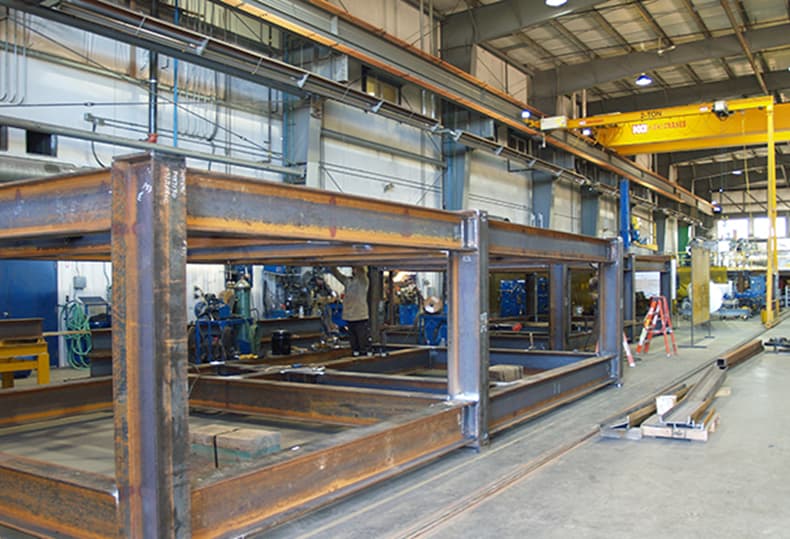Why Alpha Reo Is the Leading Option for Steel Reinforcement
Why Alpha Reo Is the Leading Option for Steel Reinforcement
Blog Article
The Ultimate Handbook on Custom-made Steel Fabrication Solutions for Structural Projects
In the world of structural projects, the relevance of custom steel construction remedies can not be overstated. From the fundamental understanding of steel fabrication basics to the intricate process of picking the most ideal materials, every step in this journey plays a critical role in the supreme success of a job.
Understanding Customized Steel Construction Fundamentals
Digging into the fundamentals of custom steel fabrication provides understanding right into the complex process of transforming raw steel right into customized architectural elements. Customized steel fabrication is a specialized production strategy that includes cutting, shaping, and setting up steel materials to create unique frameworks according to certain job requirements. Understanding the essentials of custom-made steel construction is essential for ensuring the effective execution of structural tasks.
The process generally starts with the evaluation of project requirements and style requirements. This first phase entails in-depth planning and cooperation between designers, fabricators, and developers to figure out one of the most appropriate method for making the steel components. Precision is essential throughout the fabrication procedure, as even small variances can influence the structural integrity of the end product.
Numerous techniques, such as cutting, welding, and shaping, are employed to change raw steel into the preferred structural elements. Skilled fabricators make use of sophisticated equipment and devices to make sure precision and consistency throughout the manufacture procedure. Quality control measures are applied to verify the stability of the made elements before they are constructed on-site, ensuring conformity with sector criteria and project specs.
Picking the Right Steel Materials

Primarily, the sort of architectural job and its details demands play an essential function in figuring out one of the most suitable steel products. Factors such as the load-bearing capability, ecological problems, and preferred life-span of the framework will certainly determine the grade and sort of steel that must be utilized.
Moreover, the physical residential or commercial properties of the steel, consisting of weldability, strength, and ductility, should line up with the task's requirements to assure optimum efficiency and durability (steel fixing). Furthermore, factors to consider such as corrosion resistance, cost-effectiveness, and schedule of the steel materials must also be considered throughout the choice procedure
Layout Considerations for Architectural Tasks
Structural tasks require careful attention to design factors to consider to make certain both capability and safety and security are focused on throughout the construction process. When it comes to developing architectural tasks, a number of crucial aspects must be taken into account to ensure the success of the venture. By very carefully taking into consideration these elements during the design phase, architects and engineers can make sure the structural project's success from perception to completion.
Improving Fabrication Processes for Efficiency

Additionally, implementing lean manufacturing principles can significantly enhance efficiency in steel fabrication. By reducing waste, optimizing process, and boosting interaction in between different teams entailed in the construction process, tasks can be completed more promptly and with higher high quality standards.
Furthermore, developing a well-organized production routine and workflow can aid in prioritizing jobs, appointing resources successfully, and meeting job deadlines quickly. By having a clear plan in location and regularly keeping track of progress, any type of potential traffic jams or hold-ups can be identified and resolved immediately, making sure reliable and smooth fabrication processes for architectural projects.
Quality Assurance and Task Monitoring in Steel Fabrication
To make sure the effective execution of steel manufacture jobs, careful quality assurance actions and reliable project monitoring methods are crucial components in keeping accuracy and conference customer assumptions. Quality control in steel manufacture entails rigorous evaluations at different stages of the manufacture process to verify compliance with job requirements and market standards. This includes product screening, dimensional checks, and weld examinations to ensure architectural honesty and safety.
Project management plays a critical function in coordinating the numerous facets of steel fabrication tasks, such as scheduling, source allowance, and interaction amongst team members. A well-defined task strategy with clear purposes, milestones, and timelines helps to monitor progression look at this now and deal with any possible concerns proactively. Efficient communication in between all stakeholders, including customers, engineers, producers, and professionals, is crucial for making sure that the job progresses efficiently and satisfies the desired quality criteria.
Final Thought
To conclude, personalized steel fabrication plays an essential function in architectural jobs by offering customized solutions using the right products and design factors to consider. Efficiency in manufacture processes, quality assurance, and effective job administration are important for effective results. By recognizing the basics of personalized steel manufacture and implementing structured procedures, task groups can supply high-quality and long lasting frameworks that meet the particular requirements of their clients.
Custom steel construction is a specific production strategy that involves cutting, shaping, and putting together steel products to develop one-of-a-kind structures according to particular project requirements.To make sure the effective implementation of steel fabrication projects, meticulous quality control measures and efficient task administration methods are crucial components in keeping accuracy and meeting customer expectations. Quality control in steel construction includes strenuous assessments at different phases of the fabrication procedure to validate conformity with job requirements check my site and market requirements (steel fixing).Project administration plays an important role in coordinating the various facets of steel manufacture projects, such as go now scheduling, resource appropriation, and interaction among group participants.In conclusion, custom steel fabrication plays a critical duty in architectural projects by offering tailored solutions making use of the right products and design factors to consider
Report this page